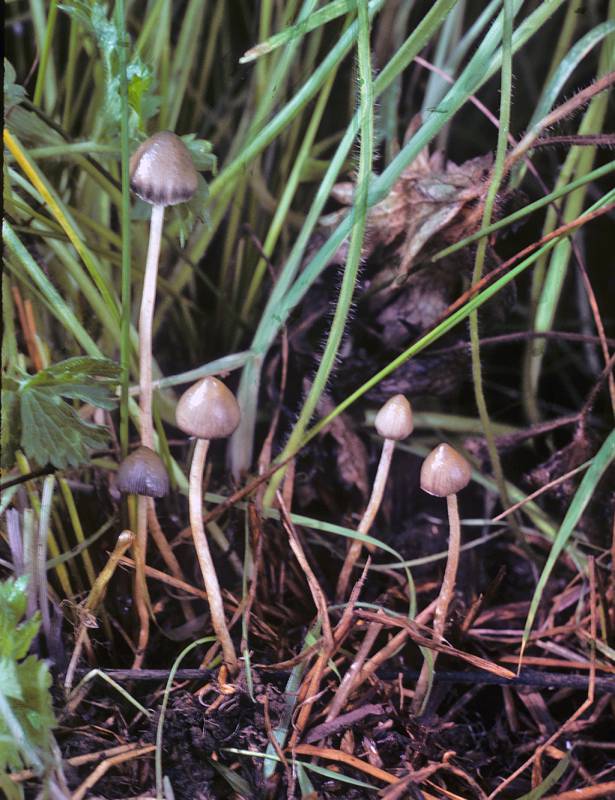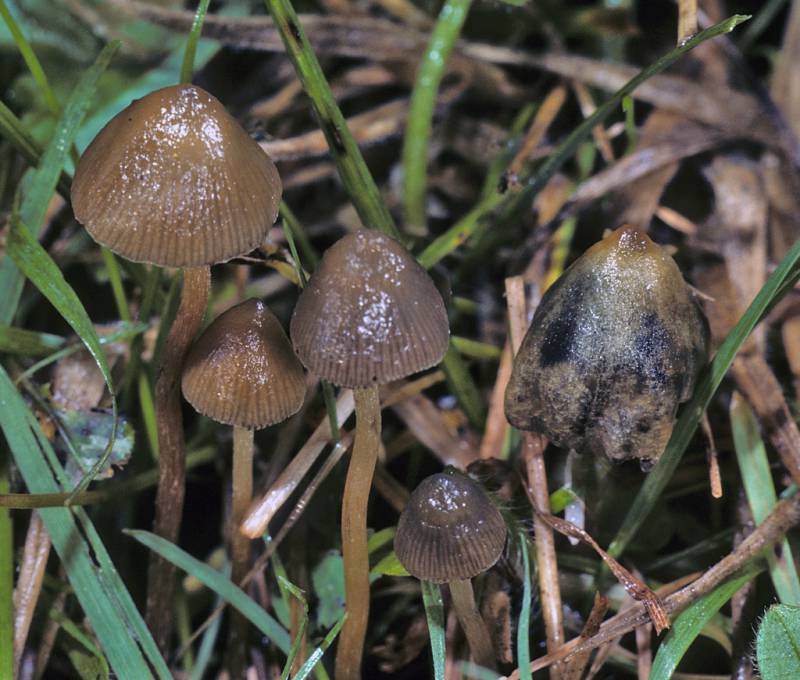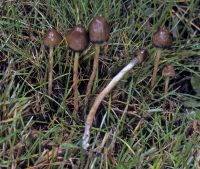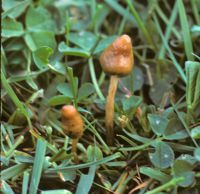Habitat: Scattered to numerous, in tall grass and grassy hummocks in cow pastures.
Spores: Late August to November
Conservation Status: Not of concern
Edibility: Hallucinogenic.
P. pelliculosa is often mistaken for P. semilanceata. It is common under conifers in the Pacific Northwest and northern California. In addition to its different habitat, it is not quite as conical and has a more pronounced tendency to bruise or age blue-green. It is only mildly hallucinogenic, with 20-40 caps constituting as "average" dose. P. silvatica has spores less than 10 microns long; it also grows under conifers and occurs across the northern half of the continent. There are also a number of small to minute, more or less conical, brown or gray Psilocybes that do not contain psilocybin. They grow mostly in bogs or in beds of moss and are very difficult to distinguish.
Hallucinogenic.
Cap: sharply conical, often peaked, and not expanding; sticky, smooth; brownish, fading to tan, bruising blue on margin. Gills attached, close, broad; grayish, becoming dark brown. Stalk: very thin, whitish. Veil: partial veil evanescent. Spores: purple-brown; spores 11-14 x 7-9 microns, elliptical, smooth. Chrysocystidia absent on gills.
Sources: Lincoff, Gary. National Audubon Society Field Guide to North American Mushrooms. New York, Alfred A. Knopf, 1981. Arora, David. Mushrooms Demystified. Berkeley, Ten Speed Press, 1986.
PNW Herbaria: Specimen records of Psilocybe semilanceata in the Consortium of Pacific Northwest Herbaria database
CalPhotos: Psilocybe semilanceata photos







